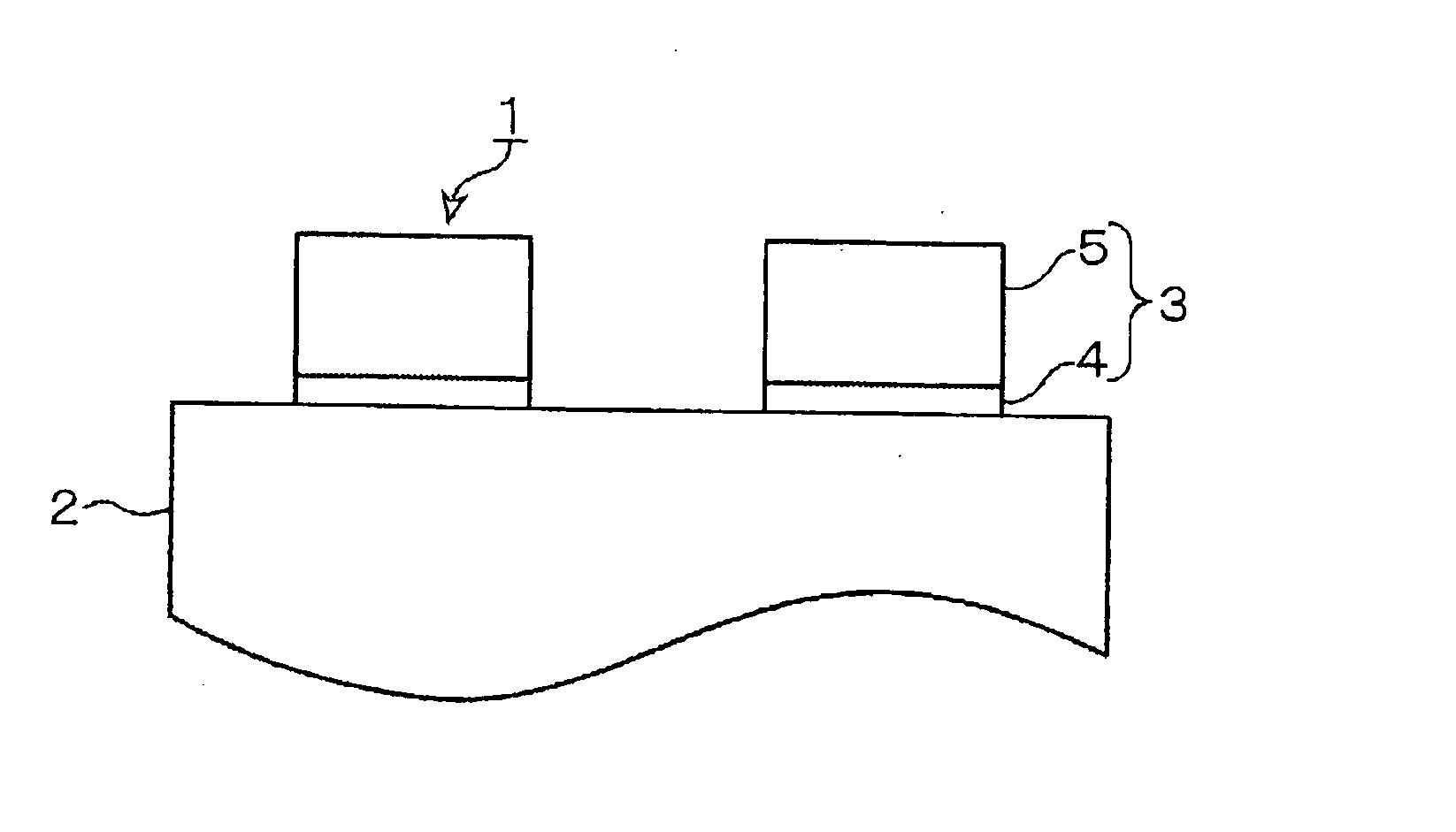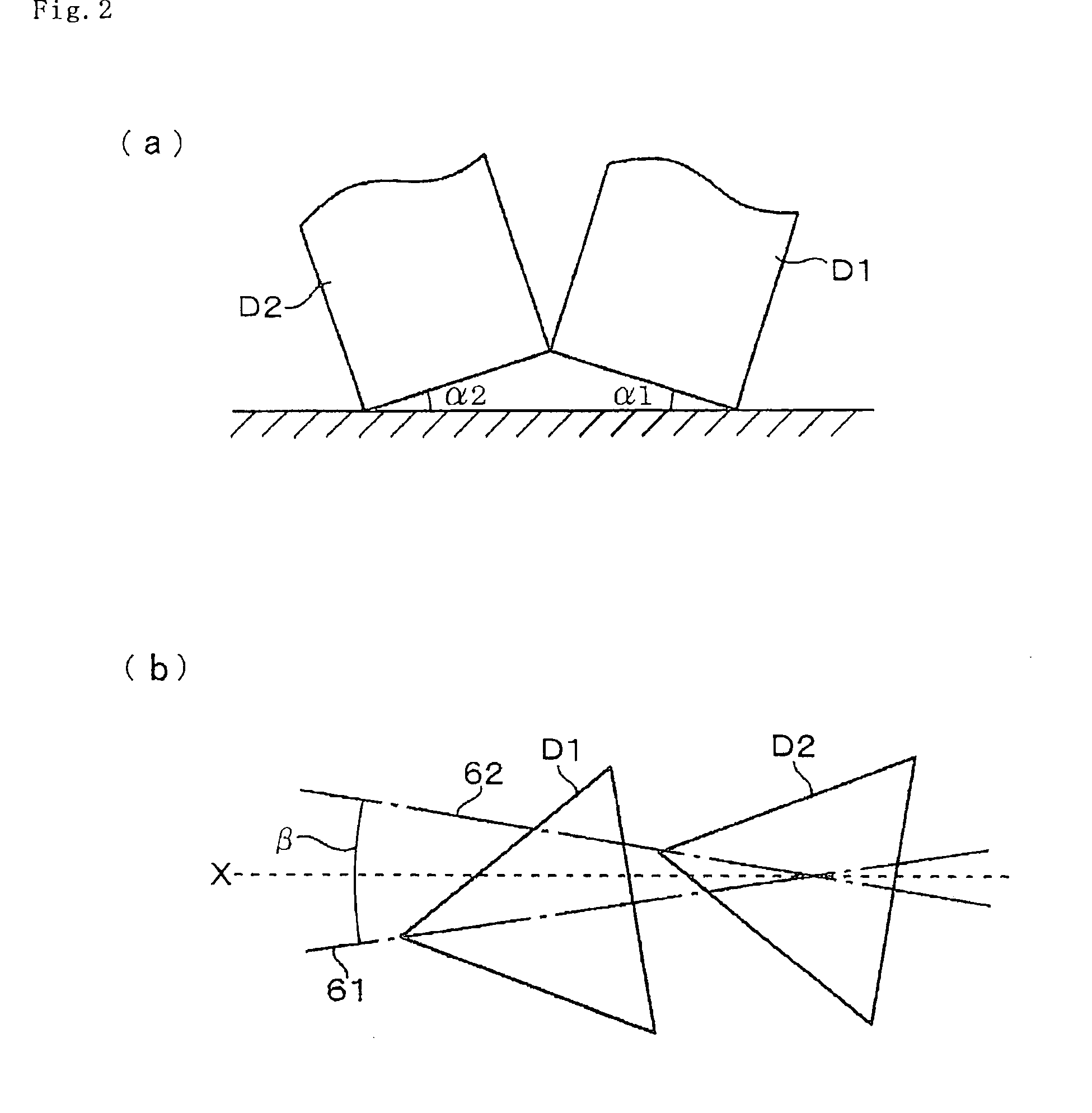Surface acoustic wave device and method of manufacturing the same
- Summary
- Abstract
- Description
- Claims
- Application Information
AI Technical Summary
Benefits of technology
Problems solved by technology
Method used
Image
Examples
embodiment 1
[0112] A 40 degree Y-cut LiTaO3 substrate was immersed in an organic solvent, such as isopropyl alcohol (IPA), and ultrasonic cleaning was carried out by applying ultrasonic into the solution. Then, the substrate was put into a DC magnetron sputtering apparatus. After vacuum exhausting to 5×10−8 Torr, a high purity argon (Ar) gas was introduced into the apparatus via a mass flow controller, and 10 nm of titanium (Ti), and 200 nm of aluminum (Al) were deposited in sequence. For any targets, deposition was conducted under conditions of argon pressure 7 mTorr, and DC 0.5 A. Note that the substrate temperature was kept at room temperature.
[0113] Both (111) and (200) pole figures of this aluminum film were measured using a 4-axis X-ray diffractometer with CuKα as an X-ray source. Diffraction angles of 111 reflection and 200 reflection (2 θ) are 38.5° and 44.8° respectively. The sample was set to an X-ray diffractometer (goniometer stage) so that the X-axis of a 40 degree Y-cut LiTaO3 su...
embodiment 2
[0117] As a second embodiment, growth on a 40 degree Y-cut LiTaO3 substrate will be explained. In the present embodiment, a titanium (Ti) / aluminum (Al)—0.5 wt % copper (Cu) laminated film was deposited using an ion beam sputtering apparatus. Similarly to embodiment 1, a 36 degree Y-cut lithium tantalate substrate was introduced in the ion beam sputtering apparatus after ultrasonic cleaning with isopropyl alcohol (IPA). Argon ions extracted from a Kaufmann type ion source were irradiated to a target, and the target material sputtered from there was deposited on the substrate. A titanium was deposited under conditions of beam voltage 1000 V, and beam current 30 mA, and aluminum (Al)—0.5 wt % copper (Cu) was deposited under conditions of beam voltage 1200 V, and beam current 50 mA. The respective film thickness were 5 nm and 200 nm. Argon pressure was 2×10−4 Torr. The substrate temperature was room temperature.
[0118] An aluminum pole figure will be shown in FIG. 11. That it is a pseud...
embodiment 3
[0120] As a third embodiment, growth on a 50 degree Y-cut LiTaO3 substrate will be explained. A titanium (Ti) / aluminum (Al)—0.5 wt % copper (Cu)—3.5 wt % magnesium (Mg) laminated film was deposited using an ion beam sputtering apparatus under the same conditions as those in Embodiment 2. The thickness of titanium (Ti), aluminum (Al)—0.5 wt % copper (Cu)—3.5 wt % magnesium (Mg) are 10 nm and 200 nm respectively.
[0121] An aluminum (111) pole figure is shown in FIG. 12. Assuming that the spots serving as the centers of two (111) domains are A and B, as for the matching relation in the direction vertical to the plane, the axis vertical to the (111) plane is tilted 6 degrees or 9 degrees to the lithium tantalate substrate surface, because the respective coordinates are (Phi, Psi)=(157°, 6°) and (239°, 9°). Meanwhile, since the X-axis of the lithium tantalate substrate matches with Phi=0° in the in-plane matching relation, the direction of the respective (111) domains are almost parall...
PUM
| Property | Measurement | Unit |
|---|---|---|
| Thickness | aaaaa | aaaaa |
| Thickness | aaaaa | aaaaa |
| Angle | aaaaa | aaaaa |
Abstract
Description
Claims
Application Information
 Login to View More
Login to View More - R&D
- Intellectual Property
- Life Sciences
- Materials
- Tech Scout
- Unparalleled Data Quality
- Higher Quality Content
- 60% Fewer Hallucinations
Browse by: Latest US Patents, China's latest patents, Technical Efficacy Thesaurus, Application Domain, Technology Topic, Popular Technical Reports.
© 2025 PatSnap. All rights reserved.Legal|Privacy policy|Modern Slavery Act Transparency Statement|Sitemap|About US| Contact US: help@patsnap.com



